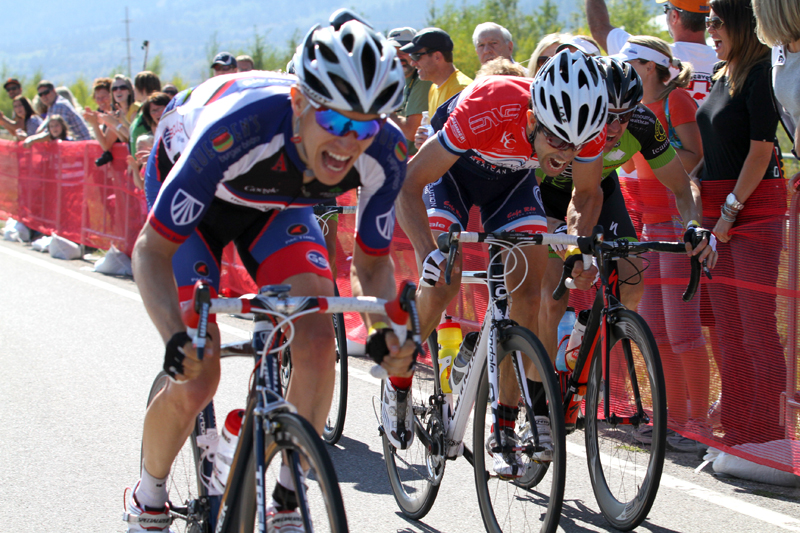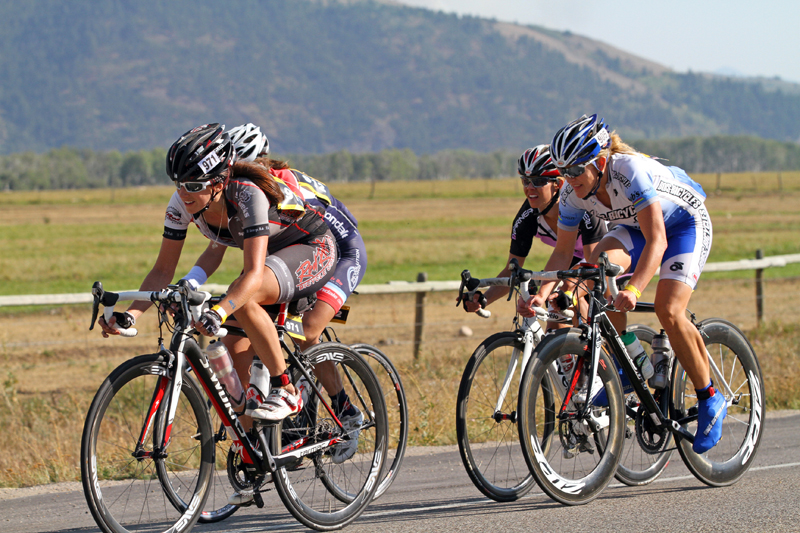By David Bern — Layton, Utah — Final preparations for this year’s LoToJa Classic on Sept. 7 have been under way for weeks and part of the work includes answering phone calls and emails from registrants who have a burning question.
According to Race Director Brent Chambers, the questions have been exceptionally heavy this year, likely because of five key changes he made to make LoToJa safer and to do a better job of separating rider classes. Those five key changes are:
- LoToJa’s competitive citizen and non-competitve fun ride classes have been replaced by a single new Cyclosportive Ride Class.
- Licensed racers and cyclosportive riders will take different routes through Cache Valley to Preston from the start at Sunrise Cyclery in Logan.
- Support Crews for licensed racers, cyclosportive riders, and relay teams will travel different roads from Logan to Jackson.
- Feed zones will be in the same locations as previous years, but Feed Zone 1 in Preston is exclusively for cyclosportive riders and their support crews. Feed Zone 3 in Montpelier is neutral support only for cyclosportive riders and the first feed zone for the support crews of licensed racers. Feed Zone 5 in Afton will be the first feed zone shared by support crews of all licensed racers and cyclosportive riders, followed by Feed Zone 6 at Alpine Junction.
- Start times in Logan will continue to be triggered at three-minute intervals, but will alternate between licensed racer categories and cyclosportive categories. This change will effectively create a six-minute time gap between each departing start group.

“All of these changes have been made to increase LoToJa’s safety and reduce rider and support crew congestion,” said Chambers. “After last year’s event, our permitting agencies asked us to reduce cyclist and vehicle congestion, especially during LoToJa’s first 77 miles between Logan and Montpelier. I believe these changes will achieve that objective.”
Perhaps the biggest change to the 31st annual LoToJa Classic is the addition of the cyclosportive. For years, Chambers has been looking at ways to simplify LoToJa’s citizen race and non-competitive fun-ride classes to help streamline the licensed race and improve officiating. On event day, over 1,500 cyclists are on the 200-plus mile course from Logan, Utah to Jackson Hole Mountain Resort.

“The cyclosportive will give us a better officiating position than we’ve had before,” he said. “For an event like LoToJa, a cyclosportive or gran fondo class makes sense, especially now that they’ve grown in popularity in the U.S. We’ve heard some grumbling from competitive citizen riders about the switch, but they’ll soon see it won’t effect how they ride that day, whether they race against others, or simply ride with others within the cyclosportive. The cyclosportive won’t start enmasse like in Europe; there will be age categories that start separately, and there will be winners in each cyclosportive category.”
To further reduce congestion during LoToJa’s first 34 miles, cyclosportive riders will take 1000 West and the standard route north through central Cache Valley to Preston, while licensed racers will take 600 West out of Logan and then north on Highway 91 to Preston. Approximately five miles before Preston, licensed racers will turn right onto 2400 East and take a series of country roads east of Preston, and then connect with Highway 34 via 800 East on the northeast side of town. From there they will proceed to Riverdale and on to the Strawberry Canyon climb.
To reduce vehicle congestion caused by support crews and general traffic, which has been a challenge to the event organization for years, Chambers has designed three different travel routes for licensed, cyclosportive and relay rider support crews. These routes are necessary because support crew vehicle traffic has been heavy on U.S. 91, Mail Route Road, SR-34 and U.S. 30 for years. The benefit change is there will be half as many crews and their vehicles at LoToJa’s busiest feed zones (Preston and Montpelier). Also, traffic on U.S. 30
from Soda to Montpelier will see a huge reduction in vehicle traffic, as would the junction in Geneva.
“The entire effort is to again, reduce congestion, which in turn will make the day easier for support crews who are anxiously trying to properly feed and hydrate their rider or riders,” said Chambers. “Crewing for LoToJa is not an easy endeavor, but the three support crew travel routes are designed to reduce that stress, while at the same time reduce LoToJa’s impact on the main course and area roadways. Because of LoToJa’s tremendous growth over the past decade, the event’s impact in terms of the number of vehicles on the road has been substantial. I’m committed to minimize that as much as possible.”
Like last year, there will be seven feed zones. Four of them — at Preston, Montpellier, Afton, and Alpine Junction — will be serviced by support crews. The other three — one mile south of the summit of Strawberry, at the summit of Salt River Pass, and at the King’s Wave pullout one mile south of Hoback Junction — are neutral support only. Hydration and food will be provided at those neutral feed zones by the race’s volunteer teams and sponsors. The biggest change for feed zones this year is Preston. All licensed racers will bypass that feed zone and proceed to climb Strawberry Canyon to be serviced for the first time at the neutral feed zone near the summit.
“We’re predicting the Preston feed zone will be far less hectic this year with only the cyclosportive riders going through there,” said Chambers. “Licensed riders are advised to carry an extra bottle and plenty of food because they won’t hit the first neutral feed until 55.5 miles — and they aren’t easy miles, especially the 21 miles of climbing in the canyon.”
The final big change in this year’s LoToJa is the way in which racers and riders will depart from Sunrise Cyclery. Start times will continue to be triggered at three-minute intervals, but will alternate between licensed and cyclosportive categories. This process will create six-minute gaps on the road between each category as they leave Logan. The larger time gaps — and having licensed racers and cyclosportive riders using different routes to Preston — should significantly reduce congestion and unwanted combining of categories.
“Our number one priority at LoToJa is always safety first,” stressed Chambers. “These five key changes to the event are in alignment with that number one priority.”
He added it is hoped cyclists and support crews will take more time over the next few weeks to review the event’s website at www.lotojaclassic.com to better familiarize themselves with the course, support crew travel routes, feed zone areas and rules. The 2013 race guide that contains more detailed information about this year’s LoToJa is scheduled to be posted on the website by mid-August — at least three weeks before Sept. 7.
Also, a printed version of the race guide will be placed inside each cyclist’s registration packet. Packets will be available for pickup at Biker’s Edge in Kaysville on Thursday, Sept. 5 from 3 p.m. to 7 p.m.; and at the Sunrise Cyclery start line in Logan on Friday, Sept. 6 from 11 a.m. to 7 p.m.
For more information, see www.lotojaclassic.com.

